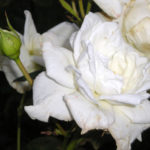Objective:
I can recognize the variety of ways professionals use Photoshop to manipulate digital images, as well as their reasons for doing so.
Links:
Hacker Factor Blog: “Body By Victoria”
Refinery 29: “Confessions of An Anonymous Victoria’s Secret Photoshopper”
Kotaku East: “A Brief History of North Korean Photoshops”
Google Image Search Result: “Photoshop Disasters”
Assignment:
Last week, we tested our acquired Photoshop skills by building a composite image using several smaller images. Today, we are going to look at some examples of professional Photoshop alterations. Some good, some not so good, some gone horribly wrong.
Keep in mind as you view these images, that these were done by professional Photoshop artists who were paid for the work.
Read the Hacker Factor Blog article entitled “Body by Victoria” to see firsthand what kind of modifications are applied to even the most beautiful supermodels’ bodies using Photoshop tools.
Read the Refinery 29 article entitled “Confessions of an Anonymous Victoria’s Secret Photoshopper“. We’ll discuss why virtually all clothing companies feel the need to manipulate the images of women to fit a subjective ideal body type, and why you should never, ever read beauty magazines or bodybuilder magazines (spoiler: they will only make you feel ugly and inadequate using Photoshop trickery).
Even governments get into the act. Read the Kotaku East article entitled “A Brief History of North Korean Photoshops” to see how the North Korean government uses Photoshop to (badly) alter images for their own purposes. The images may be good for some chuckles, but we’ll discuss in class the implications of government-sponsored image manipulation.
Finally, Do a Google Image Search for “Photoshop Disasters” link. Look through the examples of Photoshop Disasters, and have a good laugh at some professional Photoshop artists who probably had a really bad day at the office when they made these obvious mistakes. As you browse through the disasters, be on the lookout for one that you think you can correct using the image repair techniques we have studied in class. (Keep it school appropriate!)
Tomorrow, we’ll select a prime example of Photoshop fakery and use our skills to recover some of these “Photoshop Disasters”.
Presented: November 7th, 2019

